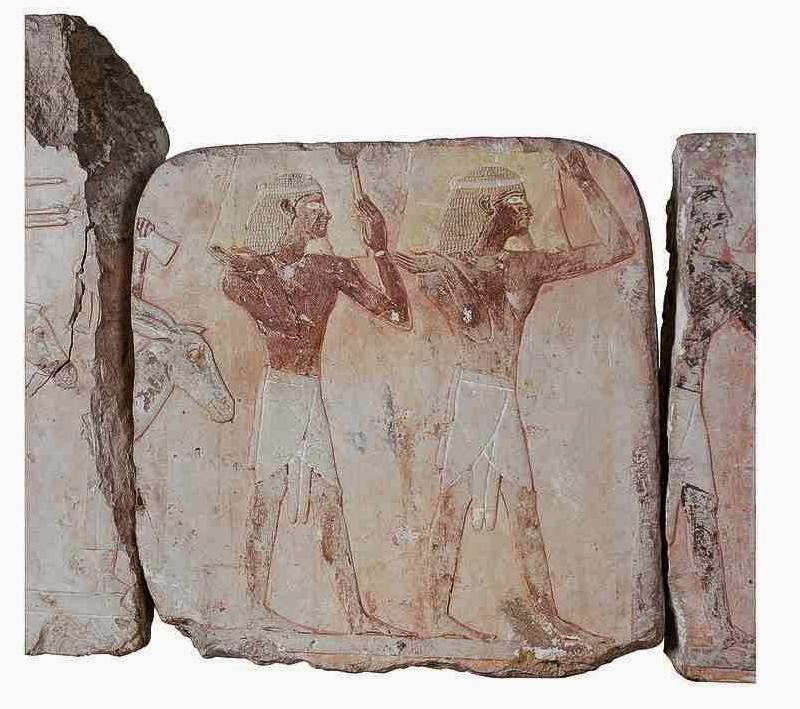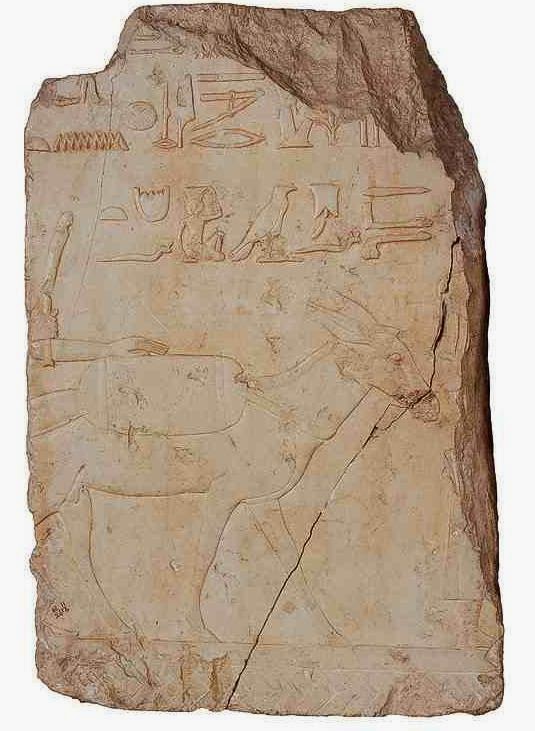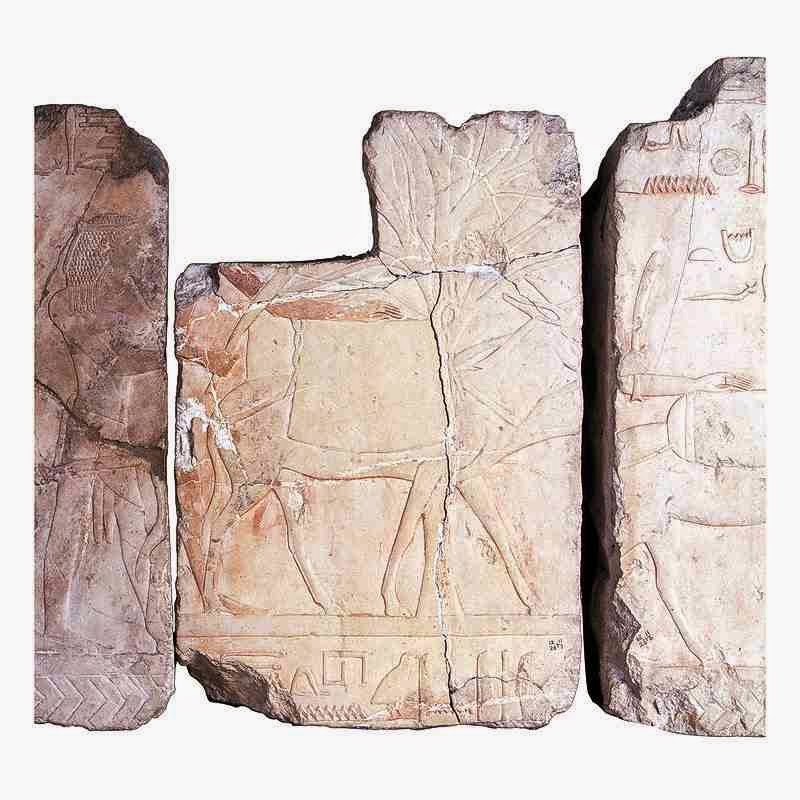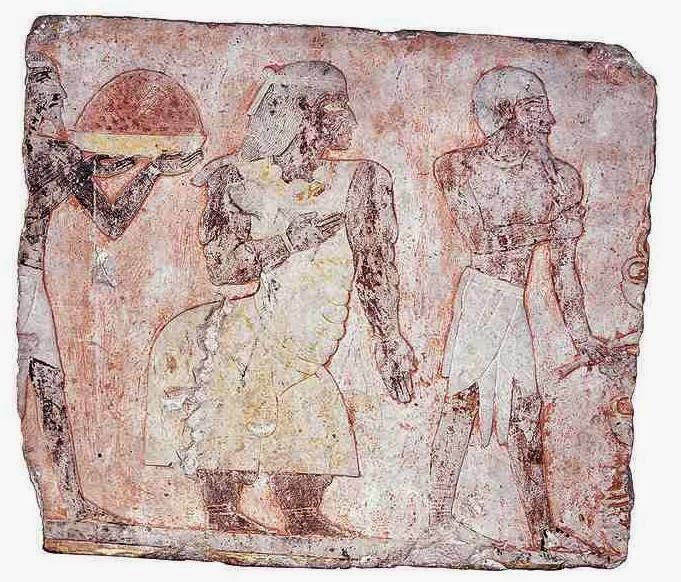| Online: | |
| Visits: | |
| Stories: |
Scenes of Punt Expedition from Deir el-Bahari
The Punt expedition allowed the Egyptian travelers to exchange their merchandise for the products of Punt, such as incense, myrrh, ivory, ebony, malachite, gold, and electrum.
The scene is accompanied by text that reveals the delicate sense of humor of the ancient Egyptians. It says, “The poor donkey, which bears his wife.” That was because of her large body and her heavy weight.
This block shows a man holding a stick to guide a donkey that carries some gifts to be exchanged between the Egyptians and the people of Punt.
The Egyptian gifts were objects like daggers, designed to induce the Ruler to exchange them for gold, ivory, leopard skins, animals, and frankincense trees.
Importing these trees was the real object of the expedition. The object was to plant them at the sides of the facade of the temple at Deir el-Bahari.
Incense was very important in Egyptian cult life. It confirmed the relation between the gods and believers. It was also burned to ward off evil spirits.
The block shows Parehu, the Ruler of Punt, holding a rod. In front of him the Egyptians, guided by Pa-Nehsi, present jewelry and an exquisite golden dagger. Standing just behind Parehu is his wife, Ati, who is shown as a fat, deformed person.
It is likely that the Egyptian artist showed her like this because she suffered from the disease known as elephantiasis, which is characterized by the enlargement of a part of the body. It is also likely that the artist exaggerated a little to make a sort of caricature, or comic imitation.
The artist recorded all the details of African life. He even depicted small details such as the African collars worn by the Ruler of Punt and his wife and the strokes drawn on their faces.
Source: http://www.egyking.info/2014/10/scenes-of-punt-expedition-from-deir-el.html








